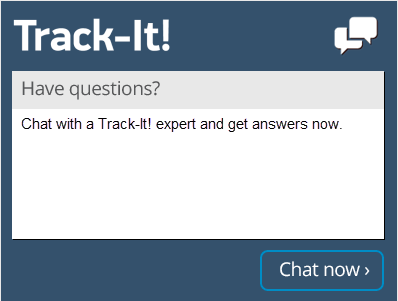What is a Help Desk Ticket?
Organizations work diligently to maintain their bottom line and keep productivity high. Many organizations strive to understand the ins and outs of the customer experience and attempt to promote a customer-centered culture. In essence, a customer-centered culture refers to making the user the center of every action performed.
Simply put, the customer experience can be seen as the battlefield where organizations can thrive or die. However, merely acknowledging the necessity to increase and improve customer support is not enough. Firms must establish the proper measure to achieve the goals of pleasing their internal and external clients. One of the most important aspects of a successful IT help desk is the Help Desk Ticketing System. Ticketing systems can vary from one organization to the next.
A Help Desk Ticketing system is a tool that helps organizations collect and manage their service and support cases. When a user has an issue, they will create a “ticket” in the support system. This ticket is documentation of an end-user request or interaction over time. Tickets make it easier and more organized for a service representative to resolve issues in an orderly fashion.
A ticketing system will allow help desk teams to prioritize assignments to create a more pleasant and seamless user experience. But how does a ticketing system operate?
What is Help Desk Software?
Depending on the organization, the end-user facing element can go by many names. It might be called the customer support desk, or the service desk or help desk. The goal of this unit remains the same. A help desk utilizes a support system, which enables an organization to receive and document user issues in an efficient manner by using a help desk software system to automate the process.
In many cases, the line between IT service management and a help desk management system can be blurry. The primary goal of a help desk is to focus on managing and resolving user concerns, whereas IT service management tends to cover the organization’s internal functions.
Why is a Help Desk Management System Important?
When it comes to user satisfaction and the resolution of tickets, there are several advantages to using a help desk management system. These advantages can be felt by not only the end-user, but also the agents and the organization as a whole. What are some other benefits of using this system?
Customer Satisfaction
Rapid Ticket Resolution: Generally, users are not aware of the processes that occur within an organization. Most users are only concerned with the resolution of their tickets. In this case, creating a help desk solution that handles tickets rapidly is of the utmost concern. Agents can also access a repository of information and FAQs to respond to the ticket and resolve it promptly.
Keeps the Customer in the Loop: Most users want to know the status of their ticket and how close it is to being resolved. Using help desk software will allow agents to respond with regular updates so the user can be kept up to date and in the know. The user will be updated throughout the life-cycle of the ticket and, finally, when the ticket is resolved.
Multiple Channel Support: Most users want to connect with the help desk team easily and have access to a line of communication at will. Utilizing a multi-channel support system allows the end-user to do precisely that. The user will have the ability to raise an issue by phone, through email, or via a self service website. Help desk management systems also enable agents to create tickets through any of the channels and lines of communication with the user.
Agent Productivity
Automated Ticket Creation: In most cases, creating a new ticket can take up a lot of time for a help desk agent. This is especially true if the task is a series of common queries. However, this is a situation that can easily be avoided. With an automated system, the agent is not required to create a manual ticket. Instead, a new ticket is created automatically whenever a customer contacts the help desk to report an issue. This allows the help desk agents to focus on resolving the issues at hand rather than wasting time manually creating new tickets for each request.
Creates a Unified Interface: Another way that agents can save time and increase efficiency is by decreasing the amount of “clicks” necessary to gather information or to complete a request. On a unified desktop system, agents can access a single customer’s view and the details of the request. Typically, the agent can view personal info and interaction history as well.
Detailed Knowledge Base: Another benefit of a HMS is access to a repository of knowledge that can help agents answer and resolve mundane or ordinary queries. When an exceptional query arises, the agent responsible for determining the issue will be able to keep a record of their solution so that other agents will be able to refer back to this approach should the problem arise again.
Benefits for Business
Easy Monitoring and Reporting: When managers can monitor the functioning contact center in real-time, they will have access to convenient dashboards and detailed reports. Analyzing data in real-time helps supervisors make quick and informed decisions that could affect resource allocation and help to ensure operations are running efficiently.
Service Level Agreements: Any successful help desk must keep track of SLAs to ensure they are valid and not breached. Using help desk management software will allow supervisors to set SLAs in place and also manage their priority. If there is a high priority SLA, it is easy to move it up the queue, ahead of lower priority cases.
Prioritized Ticketing: Supervisors also have the ability to create rules about how tickets are prioritized. This will allow the agents to act within a particular set of parameters. This feature is quite helpful in situations with High Net Income customers or cases in which the interaction with a specific end-user has been unsatisfactory in the past.
Streamlined Operations: When a help desk is all-inclusive and set up to operate properly, the organization can rest assured that functions will be seamless. Whether it is ticket creation, managing tickets, or ticket assignment, agents can do all of these tasks with ease. Organizations are then able to rid themselves of problematic silos, thus reducing disjointed conversations and increasing overall customer satisfaction.
How Exactly Does a Ticketing System Work?
In most cases, a ticketing system will operate by initially creating a document or “ticket.” That ticket will serve as a record of all details about a specific support or service case. The ticket is a shared record between the help desk agent and the user. It will also serve as a log of the communication about the issue on one easily accessible thread. If any confusion should arise, or any detail is left out, either party will be able to look back at the log at any point in time to refer to information about the specific case.
Once a ticket is created, the help desk agent can work on the issue from their end. After completing updates or arriving at a resolution, agents can alert the end-user via the ticket itself. Whenever a user has another issue or an inquiry, they can use the ticket to communicate directly with the help desk representative. The ticket system will alert the representative that worked on the ticket that a response has been logged, and the agent will be able to promptly address the response.
Once an issue has been entirely resolved, the ticket can be closed by either the representative or the end-user. If the problem reoccurs, the ticket can be reopened. It can also be reopened if the user has any additional follow-up questions or concerns. The agent is normally not required to create a brand new ticket in this case. The user will have access to the same rep that worked on the matter and will not need to re-explain the issue or concerns.
Benefits of Using a Ticketing System
When an organization grows in size and results in many users interacting within the business, it will also end up with a higher volume of technical support related issues or cases. When this occurs, it is not always necessary to hire more and more service agents to match the rising demand of users. Adding an automated ticketing system is a fantastic way to resolve the issue of more demand and streamline operations. It can provide scalable solutions to service representatives and allow for an organized flow of cases. Service reps can then become more productive and efficient and have more time to focus on the end-users needs and issues.
Utilizing a comprehensive ticket management system is a great way to ensure that the help desk runs smoothly. It will increase representative availability and in turn, increase customer satisfaction. Excellent customer service starts at the help desk and the help desk must have the proper tools and channels to keep up with demand. Tickets allow IT help desks to be responsive and proactive as well as serving to document all issues and serve the needs of the end-user. Ticketing systems can increase productivity and enhance communication within any organization.
For a simple IT solution, reach out to us here at https://trackitprod.wpengine.com/ and let us help you create a help desk ticket system you can count on.





